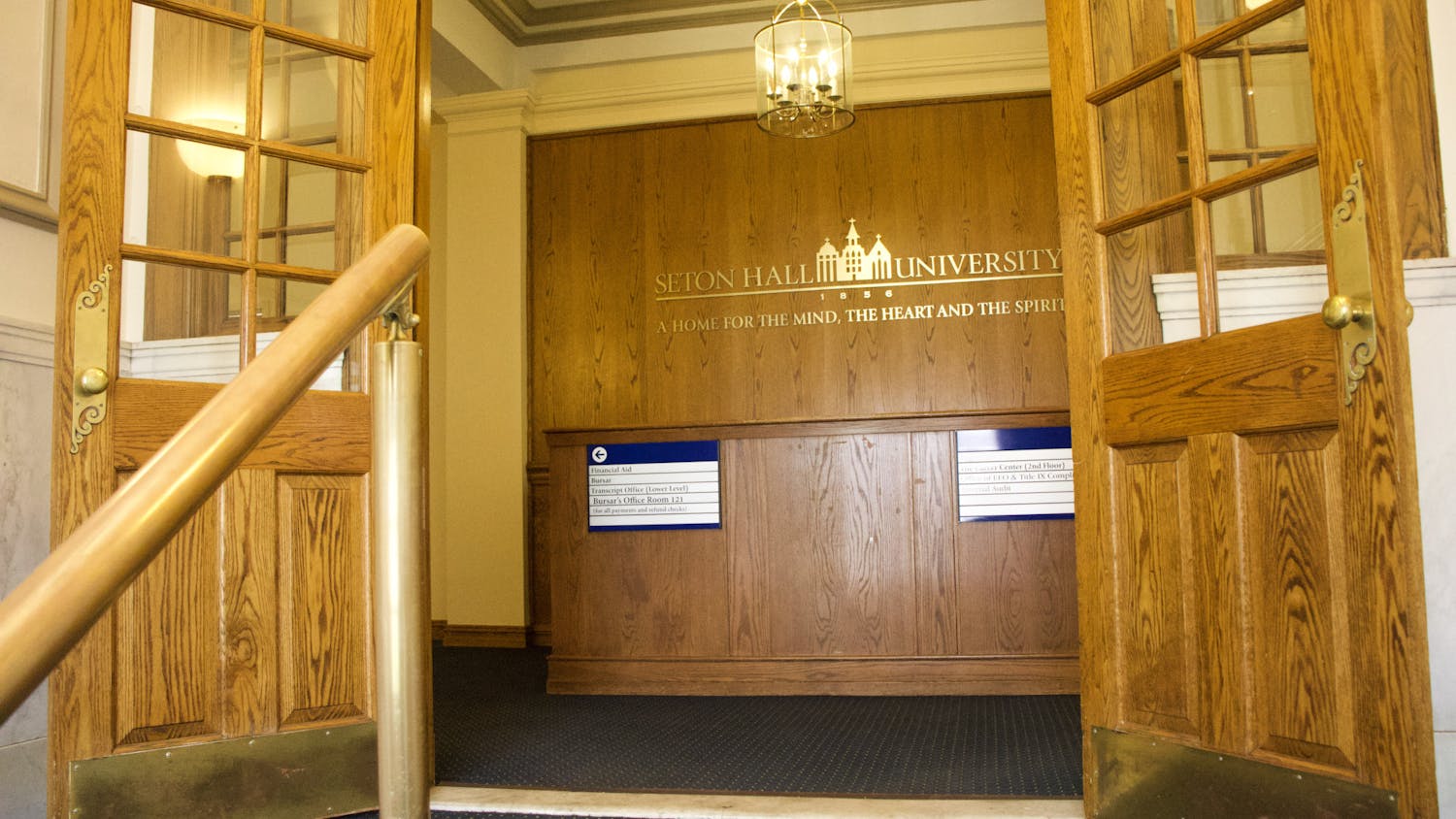It started with an investiture ceremony on "Charter Day 1996," a celebration of the charter granted from the New Jersey state legislature to the trustees of then-Seton Hall College in 1861.
And on the first day of June 2010, the presidency of Msgr. Robert Sheeran will come full circle as he steps down from the prestigious position.
While Sheeran's time at the helm will draw most media coverage, as will the search for his successor, the story behind past presidents and chancellors at the Hall for the last 30 years is one worth revisiting.
START OF THE 1980s
Closing out the 1970s was Robert T. Conley, the university's first full-time lay leader in history. He stepped aside in 1979 for Rev. Laurence T. Murphy, who led Seton Hall until the turn of the decade. Both served as the school's president during their respective periods in power.
Edward A. D'Alessio took over as president for the first three years of the 1980s, until Msgr. John J. Petillo was named chancellor in 1983. He was named to the position after the university's Board of Regents and seminary Board of Trustees created it on June 9, 1983.
According to an article in The Setonian at the time, the university explained the creation of the chancellor position as "to satisfy canonical (church) regulations and to ensure the integrity and distinct nature of each institution."
THE PETILLO YEARS
Petillo entered the university after becoming one of the youngest priests to be named a monsignor in the history of the Newark Archdiocese just two years prior. He was also only 36 years old at the time of his appointment, making him one of the youngest chancellors to lead a university in the nation.
Some of Petillo's accomplishments at Seton Hall were the creation of residence halls to "replace" the school's image as being one chiefly for commuters, the development of the recreation center and parking deck, and the start of construction on the law school in downtown Newark.
He also saw the out-of-state enrollment rate rise 21 percent, a probable effect of the Pirates' men's basketball team making the 1989 NCAA Final Four. Regardless of cause, such changes made Petillo a focal point of what some dubbed the "Seton Hall Renaissance."
But Petillo's time at the university began to seem shaky in Dec. 1988, when he announced that the Board of Regents had approved his request to take a semester of sabbatical. Rev. Dennis Mahon assumed the role of Acting Chancellor, while Petillo said through an administrative announcement that he would "continue to participate in development programs" for the university while on sabbatical.
Just one year later, Petillo decided to step away from his position. He tendered a resignation to Archbishop Theodore E. McCarrick of Newark on Dec. 11, 1989.
"My decision was made with over a year of reflection," Petillo said at the time of his resignation. "It comes, as you may imagine, with some anxiety. I believe now is the time for me to try other challenges."
Petillo's announcement came as a surprise to many within the university community. An editorial in the Jan. 25, 1990 issue of The Setonian criticizes Petillo for making his decision known first to the Star Ledger newspaper and not the school's student-run media. Just a few weeks prior, in a special decade-in-review edition of The Setonian, Petillo was named "Pirate Personality of the 80s."
CHANGE INTO THE 1990s
To find a replacement, Seton Hall compiled a "Search and Screen Committee," which was finalized on Dec. 14, 1989. The committee's task was to help the Board of Regents "in the recruitment and appointment of a new Chancellor."
The committee featured four Regents, one Chancellor society member, three faculty members, one member of the priest community, three administrators, one alumnus and one student.
Dr. A. Zachary Yamba, a Regent and president of Essex County College, led the group as chairman. Dennis Gaito, another Regent and a managing partner in the firm known at the time as Mortenson and Associates, served as vice chairman.
Additionally, Msgr. Richard Liddy was named the Acting Chancellor to serve the university during the transition period. The decision among the Board of Regents was that the Acting Chancellor would not be eligible for appointment to the position permanently.
At the end of the summer of 1990, Seton Hall had found its next leader. Via administrative announcement, the inauguration of the school's 19th "chief executive" was to be on Oct. 13, 1990 – University Day.
The choice for the university was Very Rev. Thomas R. Peterson, who had spent 14 years prior as the president of Providence College. Peterson assumed both the roles of president and chancellor.
His work at Providence, including raising $25 million while doubling the school's size and making it co-ed, led to the university stating that Peterson had a "proven record of effectiveness in top management" in an article for the Summer 1990 issue of Seton Hall University Magazine.
The Newark native and Dominican priest was 61 years old when his time as Seton Hall chancellor and president began.
Around the same time of Peterson's selection, Petillo was named the president and Chief Operating Office of the health insurance company Blue Cross and Blue Shield of New Jersey. Since, he has served as president of the University of Medicine and Dentistry of New Jersey and been named dean at Sacred Heart University's business college.
Peterson, meanwhile, held his dual post from 1990 until 1996, when he stepped down as president while retaining the position of chancellor until his retirement in June 2000.
SHEERAN ENTERS THE PRESIDENCY
Also in 1996, to fill the role of president and separate the positions, the university promoted Sheeran to the top leadership spot. He was serving as executive vice chancellor at the time.
Until Peterson's retirement, Sheeran handled the school's day-to-day operations while Peterson managed relations with alumni and other organizations, according to an Oct. 2000 article in the New York Times.
In 2000, Sheeran assumed both the duties of president and chancellor with no successor to the latter being named. Peterson died on Oct. 22, 2000 at the age of 71.
Since this last change, there has been only a president in office with no chancellor appointed.
However, with the next chapter of change to Seton Hall's top administrative post forthcoming, the past shows that many options are possible for this most current search committee and the Boards of Regents and Trustees.
Information for this story was obtained from the Msgr. William Noe Field Archives and Special Collections Center.
Brian Wisowaty can be reached at brian.wisowaty@student.shu.edu.




